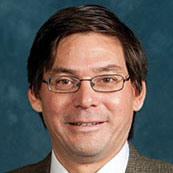Doing Science Firsthand Through Dorm-Room Labs
Resource Format:
Profile
Resource Description:
Professor Mark Moldwin (Atmospheric, Oceanic and Space Sciences) won the Provost's Teaching Innovation Prize in 2014 for his project, Doing Science Firsthand Through Dorm-Room Labs.
Original Publication Year:
2014
Resource Title:
TIP Winner: Doing Science Firsthand Through Dorm-Room Labs
thumbnail:
Course Type:
All
Academic Area:
Engineering
Discipline:
Atmospheric, Oceanic and Space Sciences
Faculty Name:
Mark Moldwin
Related Links:
Previous Innovation
Next Innovation

Identifying students’ most common misconceptions is a strategy for focusing interventions that can yield tremendous payoffs in student learning. Dorm-room labs offer a method for moving difficult concepts off the “wrong answer†list. They are particularly valuable in large, introductory science and engineering courses whereby non-majors can fulfill a breadth requirement, yet lack access to fully equipped lab classrooms.
Dorm-room labs consist of short activities followed by a few questions and a highly structured lab report. They cover abstract concepts that are less familiar to students. For example, inexpensive UV Color-Changing Beads enable students to conduct experiments in almost any setting, including their dorm rooms. As they have fun determining which materials block ultraviolet light most effectively, students are practicing valuable skills, such as plotting data.
The genius of this innovation is that it attacks misunderstandings at the root. Instead of passively receiving content knowledge, students actively participate in a process of collecting and interpreting data. As a result, not only do they understand abstract concepts more concretely, but they also know how they know. The better they can synthesize course content into a conceptual framework, the more likely they are to develop deeper understanding.
Student Comments
“Dorm-room labs are excellent tools for teaching abstract science concepts, and they are easy/affordable to implement in any large lecture.â€
“More dorm-room labs!!!â€
“Students performed well on exam questions pertaining to lab concepts.â€
Building a soda straw rocket at home and “varying the length of the rocket or nose cone revealed a fundamental physical relationship in a fashion that was both fun and instructive.â€
“Many students put demonstrably more effort into the dorm-room lab assignment than other, more traditional assignments.â€
Initially “wary of dorm-room labs due to their unfamiliar nature, we soon learned that science is often more fun when you are actually doing it.â€
“Many students submitted pictures or videos of themselves having fun doing the experiment.â€
Above photo:
Mark Moldwin (Atmospheric, Oceanic and Space Sciences)

